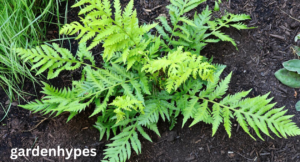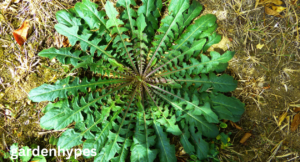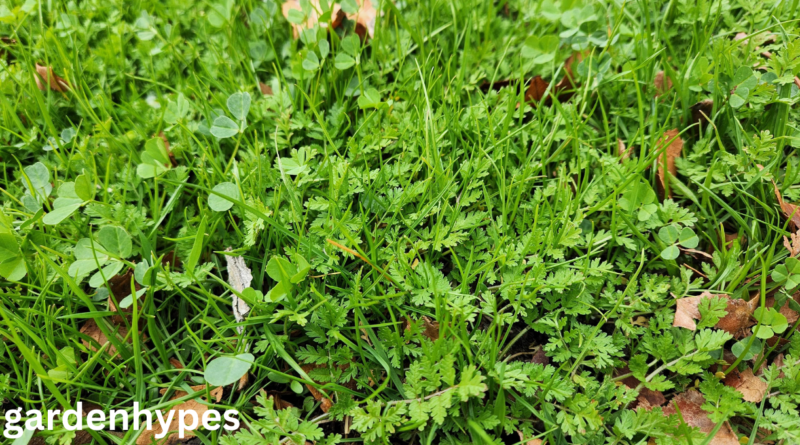Fern-like Weeds Identification Control and Management
Introduction
Have you ever spotted a feathery green plant in your garden and thought it looked just like a fern—only to later realize it was a weed? That’s the tricky thing about fern-like weeds. At first glance, they can be mistaken for beautiful, ornamental ferns that add lush greenery to shaded spots. However, these imposters are usually invasive, aggressive, and capable of taking over an entire garden if left unchecked.
Fern-like weeds aren’t technically ferns at all, but their fine, divided leaves and airy textures make them appear similar. Gardeners often get confused because they grow in the same shady, moist environments where real ferns thrive. But unlike true ferns, these weeds spread relentlessly, either through underground rhizomes or through spores that allow them to pop up almost anywhere.
click in link Queen Anne’s Lace Look-Alike
Understanding fern-like weeds is the first step to controlling them. In this article, we’ll break down how to identify these plants, why they spread so quickly, the damage they can cause, and the best methods to prevent and control them. Whether you’re dealing with horsetail creeping across your lawn or bracken fern invading your flower beds, this guide will help you manage them effectively without sacrificing your garden’s beauty.
Characteristics of Fern-like Weeds
Fern-like weeds share a few distinct features that make them easy to confuse with true ferns. Their overall growth habit is soft, delicate, and airy. Many of them have thin, feathery leaves that split into smaller leaflets, giving them a lacy, ornamental look. Some even have tall, upright stems that resemble fern fronds waving in the breeze.
But here’s where they differ: fern-like weeds usually grow much faster and spread more aggressively than ornamental ferns. Instead of politely filling in shady corners, they often march across lawns, flowerbeds, and pathways without invitation. Many also have deep root systems or creeping rhizomes that make them extremely hard to eradicate once established.
Another common trait is adaptability. Fern-like weeds don’t just stick to shady woodland-like areas; they often thrive in poor soils, disturbed land, or even sandy patches where most delicate ferns wouldn’t survive. Their resilience makes them a headache for gardeners who want low-maintenance landscaping.
To sum it up, if you notice a plant that looks like a fern but spreads like wildfire, chances are you’re dealing with one of these imposters.
Common Fern-like Weeds Found in Gardens
Not every plant with fern-like foliage is a true fern, and several common weeds fall into this tricky category. Here are a few of the most recognizable culprits:
- Horsetail (Equisetum arvense): Probably the most notorious of all fern-like weeds. It has jointed, hollow stems and feathery branches, giving it a prehistoric look. Horsetail is nearly indestructible due to its deep rhizome network.
- Bracken Fern (Pteridium aquilinum): Unlike horsetail, bracken is a true fern, but it behaves like an invasive weed. It spreads aggressively in pastures, gardens, and even woodlands, often forming dense colonies that crowd out other plants.
- Wild Carrot (Queen Anne’s Lace): While technically not a fern or a true fern-like weed, its finely divided foliage looks very similar. This plant pops up in fields, gardens, and roadsides, often fooling gardeners at first glance.
- Other Lookalikes: Some plants, like yarrow or fennel, also have delicate, ferny foliage. While not always considered “weeds,” they can become invasive if not managed properly.
Knowing the difference between these species helps you decide the best control method—because not all fern-like weeds respond the same way to treatment.
click in link Queen Anne’s Lace Look-Alike

Horsetail Weed (Equisetum arvense)
Horsetail is one of the oldest plants on Earth, dating back to prehistoric times, and unfortunately, it’s just as persistent in today’s gardens. At first glance, horsetail looks like a miniature pine tree or fern, with upright stems and whorled branches that spread in all directions. It thrives in moist, poorly drained soils, but it’s hardy enough to survive almost anywhere.
The biggest problem with horsetail is its underground network of rhizomes. These roots can stretch several feet deep into the soil, making it nearly impossible to remove the plant by hand. Even if you pull up the visible stems, tiny fragments of the root system left behind will sprout into new plants. To make matters worse, horsetail also reproduces through spores, giving it a two-pronged attack strategy that allows it to spread rapidly.
Gardeners often get frustrated because horsetail seems immune to most control methods. Regular mowing or cutting might slow it down, but it rarely eliminates the problem. Herbicides are often ineffective too, since horsetail’s waxy stems resist absorption. Because of this, controlling horsetail requires patience, persistence, and sometimes a combination of multiple strategies.
While horsetail might look attractive from a distance with its feathery green stems, make no mistake—it’s one of the most aggressive fern-like weeds you’ll encounter. Left alone, it can dominate flowerbeds, choke out perennials, and turn a lush lawn into a weedy mess.
Bracken Fern (Pteridium aquilinum)
Bracken fern is another plant that gives gardeners headaches. Unlike horsetail, bracken is technically a true fern, but its invasive nature earns it a spot on the “fern-like weed” list. It’s one of the most widespread ferns in the world and has a reputation for overtaking pastures, hillsides, and even garden landscapes.
This plant is easy to identify because of its tall, triangular fronds that can reach up to six feet in height. The fronds spread out in a fan shape, forming dense colonies that block sunlight from reaching the ground. As a result, bracken often prevents other plants from growing in the same area.
What makes bracken even more concerning is its toxicity. The plant contains harmful compounds that can poison livestock and potentially pose health risks to humans if consumed. For this reason, many farmers and gardeners treat bracken infestations as a serious problem that needs immediate control.

Bracken spreads through underground rhizomes, much like horsetail, which makes it stubborn to eliminate. Cutting it back may temporarily weaken it, but the roots often send up new fronds in no time. Left unmanaged, bracken can create a near-monopoly in your garden, leaving little room for diversity.
click in link Queen Anne’s Lace Look-Alike
For gardeners who want to maintain a balanced ecosystem, recognizing and controlling bracken is crucial. It might look graceful swaying in the wind, but don’t be fooled—it’s a tough and invasive fern-like weed.
FAQs
- Are fern-like weeds poisonous?
Yes, some fern-like weeds can be toxic. For example, bracken fern contains harmful compounds that are dangerous to both humans and animals if ingested. Horsetail is also mildly toxic and can cause health issues in livestock. Always research before handling or consuming any plant that looks fern-like. - Can I keep fern-like weeds as ornamental plants?
While some fern-like weeds may appear attractive, keeping them is usually a bad idea. Their invasive growth habits mean they’ll quickly spread beyond where you want them. Instead, consider planting ornamental ferns or fern-lookalike perennials that are safe and non-invasive. - Do fern-like weeds harm pets?
Certain fern-like weeds can be harmful to pets if eaten. Bracken fern, in particular, is known to cause poisoning in dogs, cats, and grazing animals. Always keep an eye on curious pets in the garden and remove any potentially toxic plants from areas they frequent. - What’s the fastest way to get rid of fern-like weeds?
There’s no instant solution, but the fastest effective approach is usually a combination of methods: consistent hand-pulling (including root systems), covering with mulch or landscape fabric, and in severe cases, using targeted herbicides. Persistence is key—these weeds rarely disappear after one treatment. - Do fern-like weeds have any ecological benefits?
Interestingly, yes. Some fern-like weeds, like horsetail, can help stabilize soil and even accumulate certain minerals. However, their aggressive spread usually outweighs these benefits in garden settings. In natural ecosystems, they may play a role, but in your backyard, they’re more nuisance than helper.
